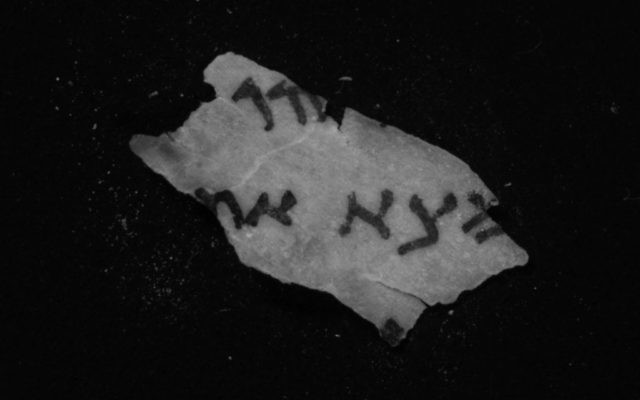High-Tech Scan Reveals Hidden Dead Sea Text
Scroll fragments reveal differences with current versions of biblical passages.

An Israel Antiquities Authority researcher used advanced imaging equipment at the Dead Sea Scrolls’ conservation labs to discover letters that are invisible to the naked eye.
The fragments — presented Tuesday, May 1, during the international conference called the Dead Sea Scrolls at Seventy: Clear a Path in the Wilderness — provide new information on one of the most important archaeological discoveries of the 20th century.
Archaeologists and Bedouin in the 1950s in the caves near Qumran discovered tens of thousands of 2,000-year-old parchment and papyrus fragments belonging to approximately 1,000 manuscripts. Because of their small size and precarious state, some fragments were placed in boxes without being sorted or deciphered. As part of the scroll digitization project, sample examinations were conducted recently among these boxes.
New imaging technology developed for NASA and used in the digitization project can identify script on some fragments that appear blank to the naked eye. The identification of new letters and words provides data for the study of the scrolls. One fragment may indicate the existence of a hitherto unknown manuscript.
The digitization project is being conducted by the Dead Sea Scrolls Unit of the Israel Antiquities Authority. As part of the project each of the thousands of fragments of the Dead Sea Scrolls is imaged in order to monitor its physical condition and make the best possible images available to the public. The new script was discovered by
Oren Ableman, a scroll researcher with the Israel Antiquities Authority and a doctoral candidate at the Hebrew University of Jerusalem, found the script when he examined a few dozen from Cave 11.
New fragments were identified from Deuteronomy, Leviticus and Jubilees.
One fragment of the Great Psalms Scroll indicates that the text of Psalm 147:1 in the cave manuscript is slightly shorter than the Hebrew text used now. Another fragment contains letters written in paleo-Hebrew that could not be attributed to any known manuscript.



comments